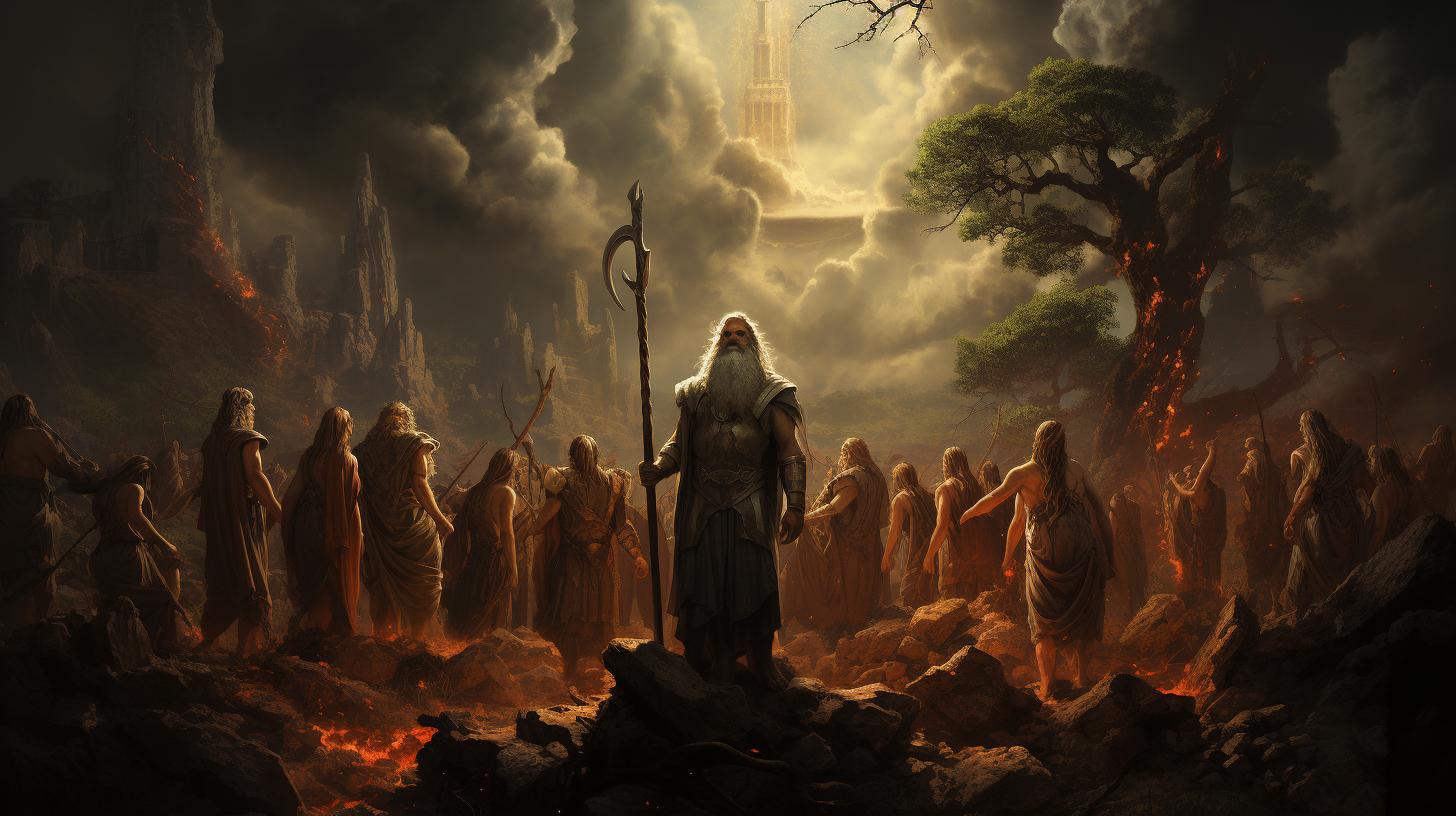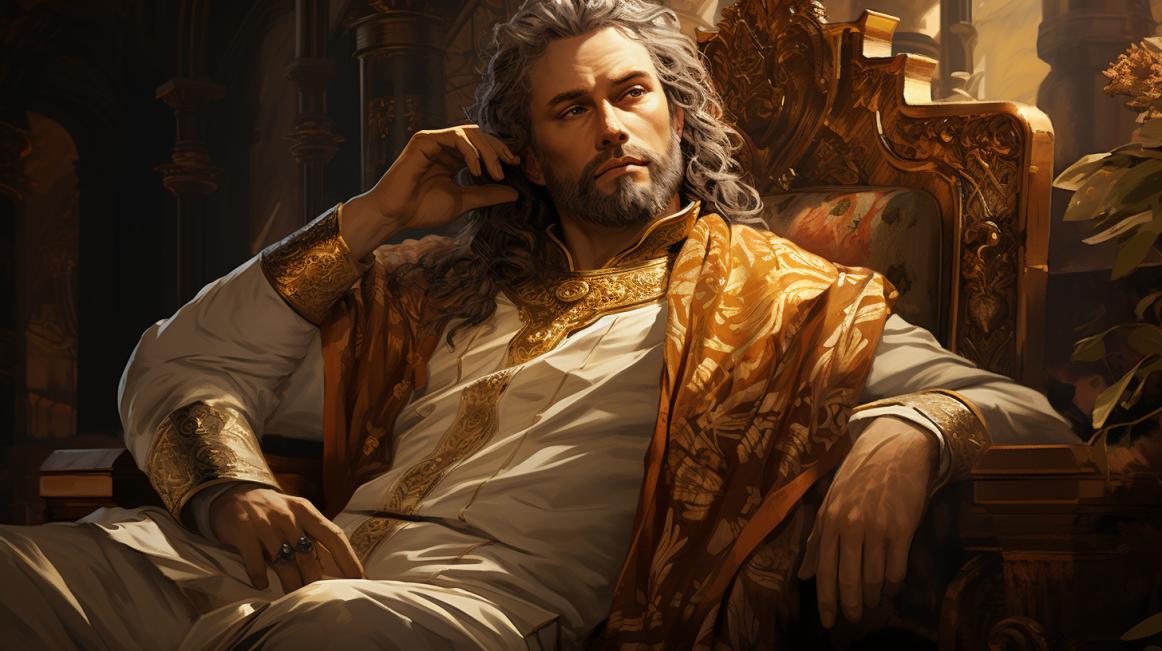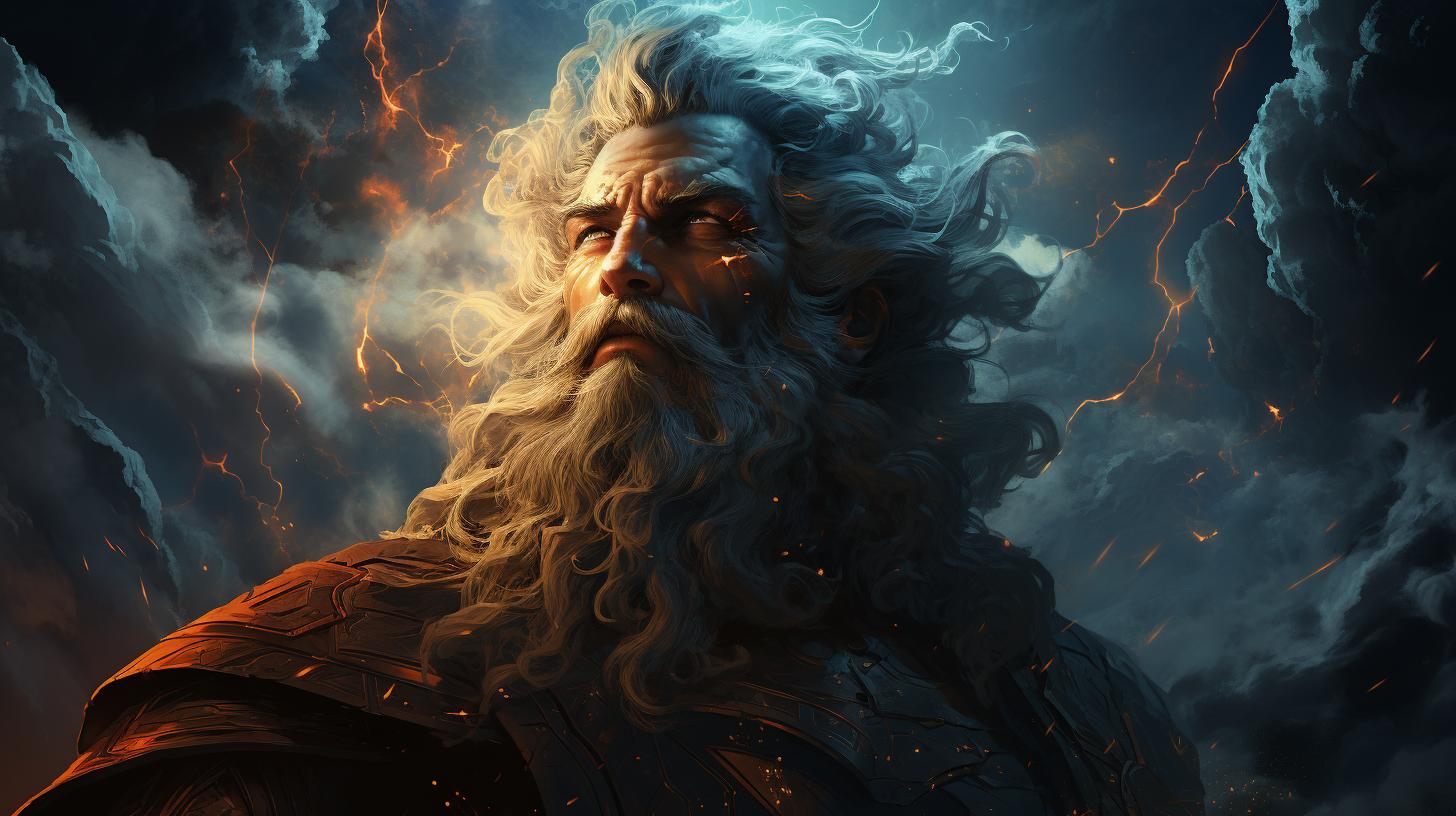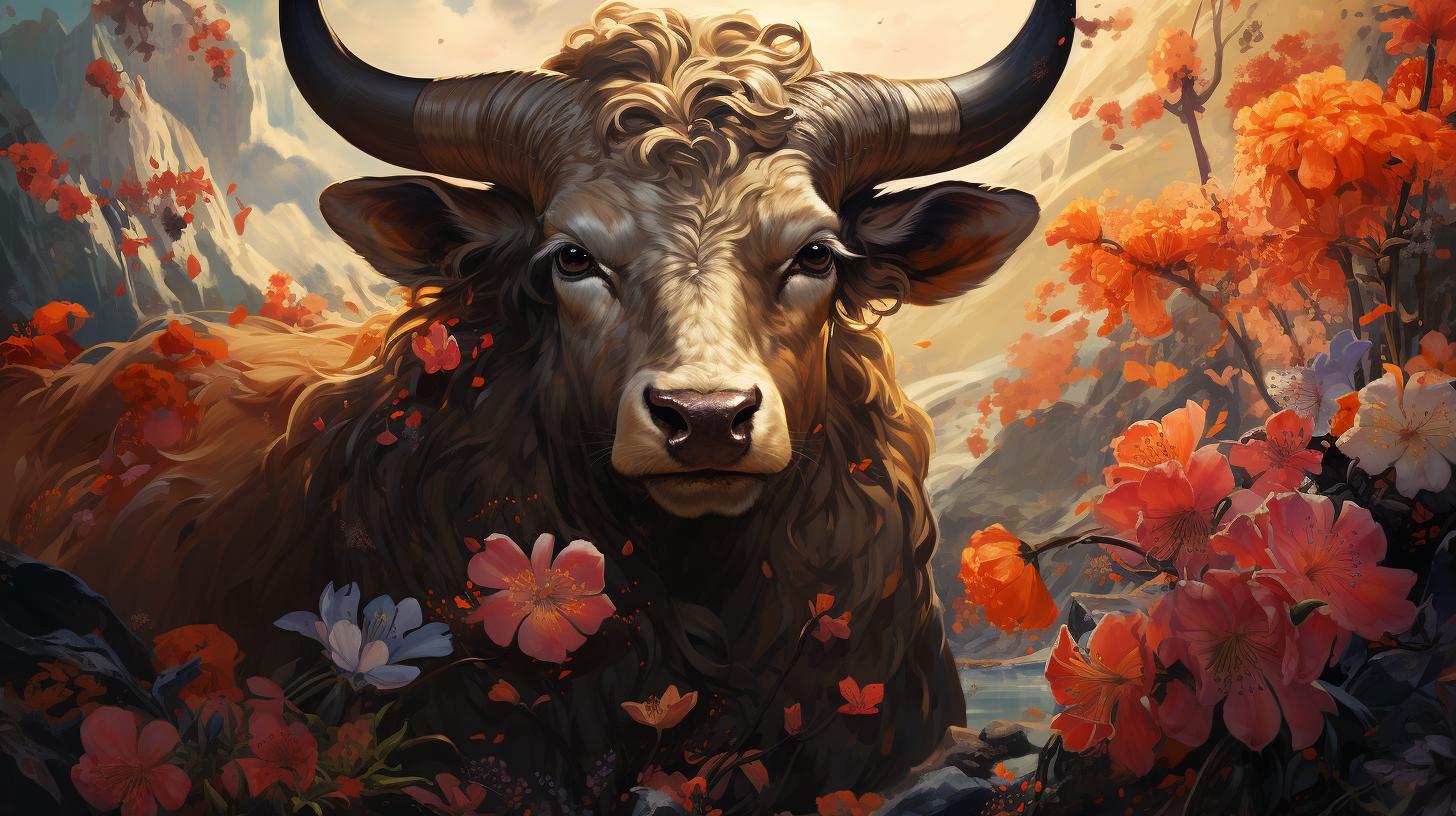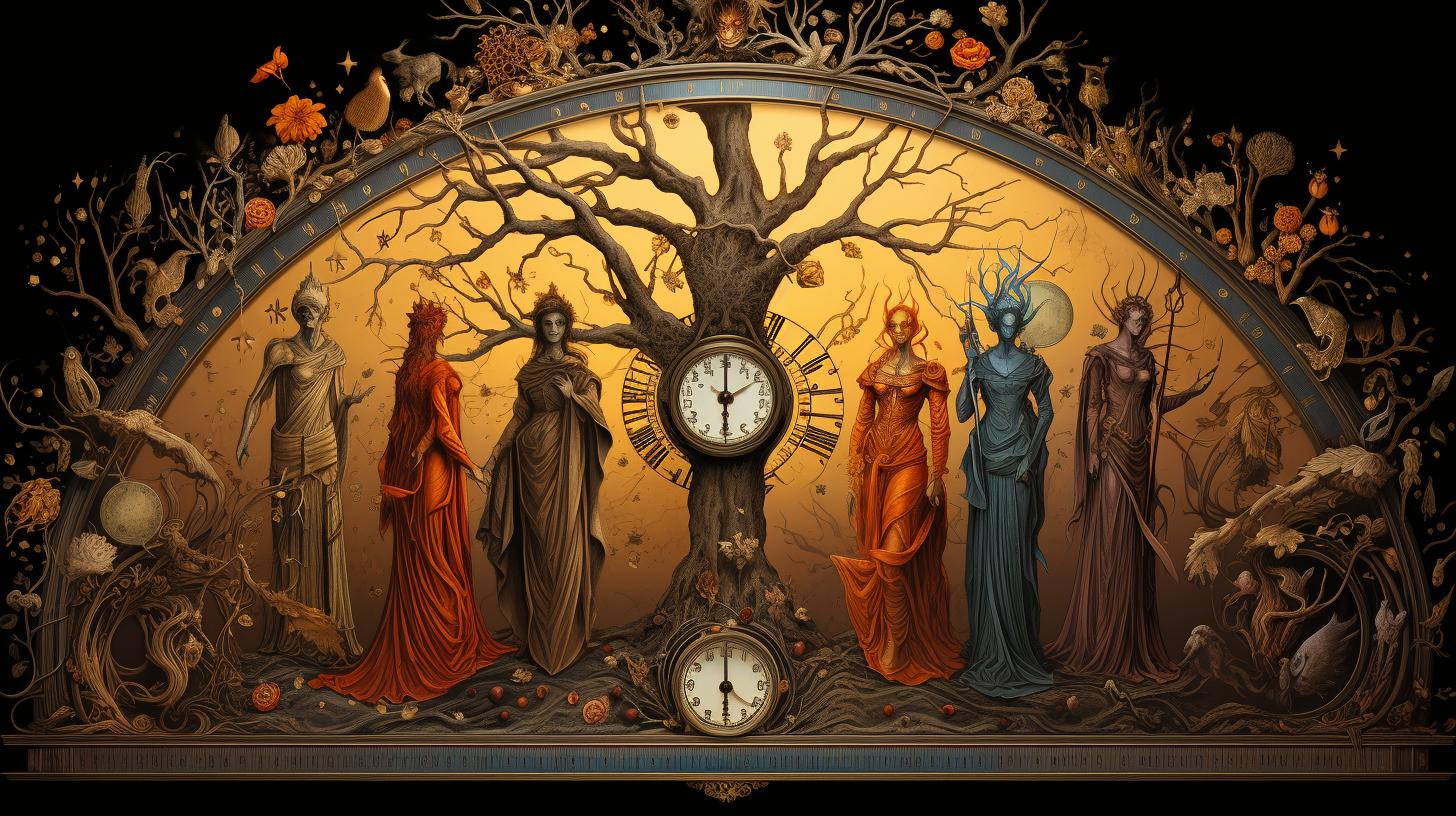Greek Mythology Hecatoncheires: The Powerful Hundred-Handers of Ancient Greece
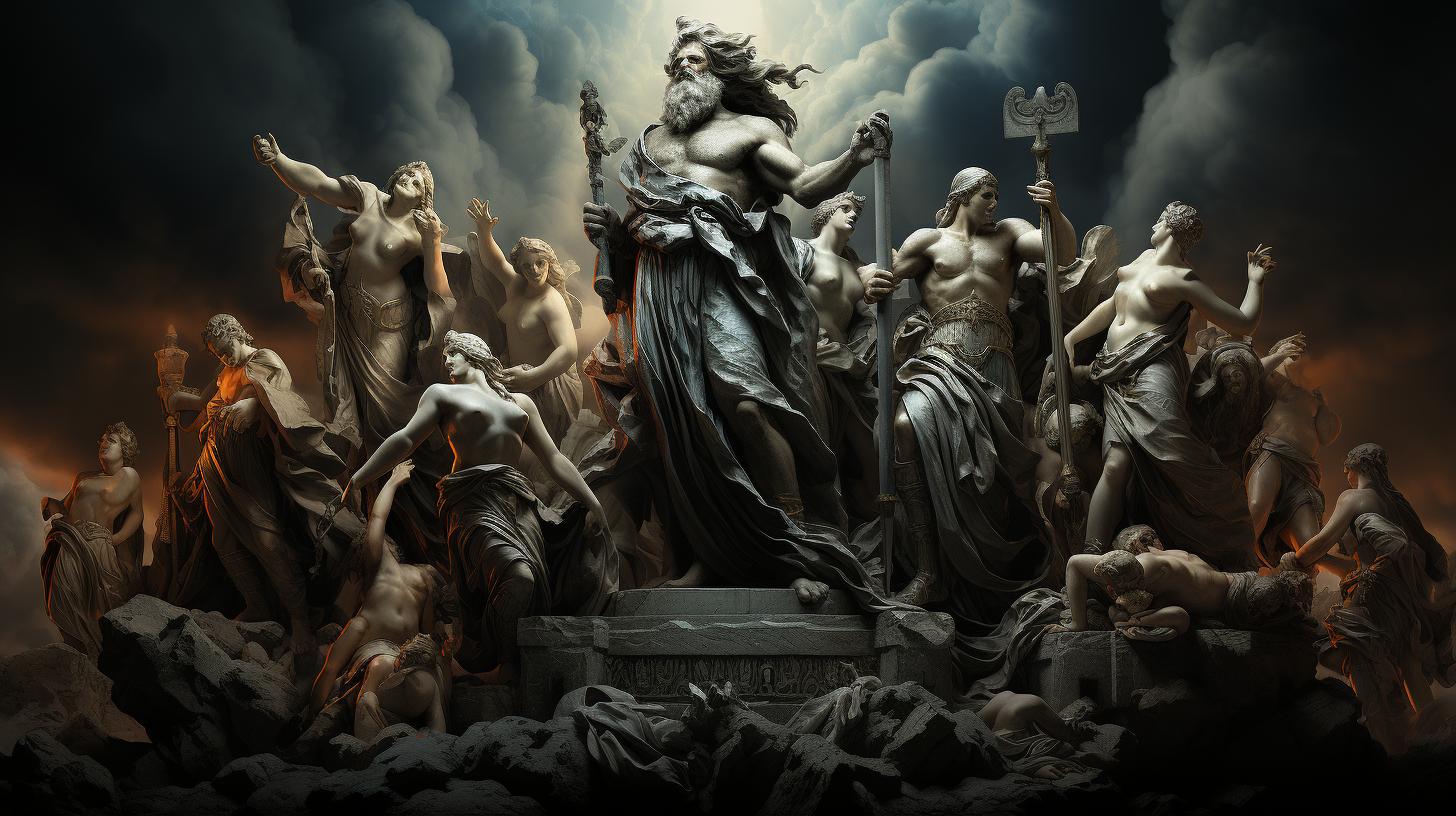
The Hecatoncheires, also known as the Hundred-Handers, are powerful creatures from Greek mythology. Born from Uranus and Gaia, they possess a hundred hands and fifty heads.
These monstrous giants were imprisoned by Uranus due to their immense power, but were freed by Zeus during his war against the Titans. Their involvement proved crucial in Zeus’ victory.
Alongside other notable creatures like the Cyclopes, Giants, Sirens, and Cerberus, the Hecatoncheires are an integral part of Greek mythology. Additionally, Typhoeus, a destructive giant, poses as an enemy to Zeus.
Origins of the Hecatoncheires
The Hecatoncheires, formidable creatures of Greek mythology, trace their origins back to the celestial realm.
Let’s explore their parentage and the circumstances surrounding their birth.
The Parents: Uranus and Gaia
Uranus, the personification of the sky, and Gaia, the embodiment of the Earth, united as father and mother to bring forth the Hecatoncheires. These monstrous giants would emerge as a testament to the power and complexity of the natural world.
The Birth of the Hecatoncheires
From the union of Uranus and Gaia arose three Hecatoncheire siblings: Cottus, Briareus, and Gyges. These awe-inspiring beings possessed an astonishing combination of strength and supernatural features, with one hundred hands and fifty heads each.
Imprisonment and Release
In the world of Greek mythology, the Hecatoncheires faced a tumultuous journey. The series of events that led to their imprisonment and eventual release were crucial in shaping the fate of the cosmos.
Uranus’ Imprisonment of the Hecatoncheires
Uranus, fearing the immense power of the Hecatoncheires, made the fateful decision to imprison them. The Hundred-Handers were locked away deep within the bowels of Tartarus, a place so dark and gloomy that even the bravest souls shuddered at its name.
Their overwhelming strength and multiple appendages were seen as a threat that had to be contained.
Cronos’ Castration of Uranus
Driven by the chaos brought upon by Uranus’ tyranny, Gaia convinced her son Cronos to rise against his father. In an act of brutality and rebellion, Cronos castrated Uranus, seizing control of the cosmos.
This act of vengeance marked a turning point, as it set the stage for the liberation of the Hecatoncheires and the dethronement of the Titans.
Zeus’ Liberation of the Hecatoncheires
Zeus, the son of Cronos, emerged as the leader of the Olympian gods and the ultimate champion of order and justice.
Recognizing the vital role that the Hecatoncheires could play in the battle against the Titans, Zeus released the Hundred-Handers from their dark prison within Tartarus. With their awe-inspiring strength and chaotic prowess, the Hecatoncheires became indispensable allies in Zeus’ quest for dominion over the Titans.
United under Zeus’ leadership, the gods embodied the hope for a new era. The release of the Hecatoncheires marked a significant shift in power and set the stage for the climactic battle that would forever alter the course of Greek mythology.
The Hecatoncheires in the Titanomachy
The Titanomachy, or the war between the Olympians and the Titans, was a significant event in Greek mythology. During this epic battle, the Hecatoncheires played a crucial role, showcasing their immense power and contributing to the victory of Zeus and his siblings.
The Role of the Hecatoncheires in the War
As formidable creatures with a hundred hands and fifty heads, the Hecatoncheires served as powerful allies in the Titanomachy. Their sheer strength and immense size made them formidable opponents to the Titans.
With their help, the Olympians were able to challenge the dominance of their Titan adversaries.
Their Contribution to Zeus’ Victory
The Hecatoncheires’ contribution to Zeus’ victory was significant. Their presence on the battlefield struck fear into the hearts of the Titans and turned the tide of the war in favor of the Olympians.
Their powerful blows and relentless assault played a pivotal role in the ultimate defeat and imprisonment of the Titans in the depths of Tartarus.
The Hecatoncheires’ Bravery and Strength
- Despite facing overwhelming odds, the Hecatoncheires fearlessly charged into battle, undeterred by the size and strength of the Titans.
- Their hundred hands and fifty heads allowed them to strike multiple opponents simultaneously, inflicting devastating blows upon the enemy.
- Their immense strength proved vital in overpowering the Titans and securing victory for Zeus and the Olympians.
The Turning Point of the Titanomachy
The intervention of the Hecatoncheires marked a turning point in the Titanomachy.
Their release from captivity by Zeus unleashed an unstoppable force that played a pivotal role in reshaping the balance of power in the cosmos. With their aid, Zeus achieved a decisive victory, establishing the reign of the Olympians and ensuring order in the realm of gods.
Guardians of the Titans in the Tártaro
After the Titanomachy, the Hecatoncheires were appointed as eternal guardians of the Titans in the Tártaro, the deepest abyss of the underworld. They stand as formidable protectors, ensuring that the Titans remain imprisoned and unable to rise against the Olympians.
With their immense strength and multiple appendages, the Hecatoncheires serve as a constant reminder of the Titans’ defeat and the triumph of Zeus and his siblings. Their presence in the Tártaro serves as a deterrent, keeping the Titans in check and preventing any upheaval in the cosmic order.
In this gloomy realm, surrounded by darkness and Tartarus’ eerie atmosphere, the Hecatoncheires maintain a watchful eye on the Titans. With their hundred hands and fifty heads, they have an unmatched ability to subdue any uprising or attempt at escape from the Titans.
Through their unwavering vigilance, the Hecatoncheires contribute to maintaining the balance of power between the Olympians and the Titans. Their mere presence serves as a reminder of the consequences of challenging the authority of the gods.
Locked away in the depths of Tartarus, the Titans remain under the unyielding watch of the Hecatoncheires. These monstrous creatures endure as eternal guardians, a symbol of the Olympians’ victory and the supremacy of Zeus in the divine hierarchy.
In the dark depths of the Tártaro, the Hecatoncheires stand firm, carrying out their duty as the unrelenting wardens of the Titans, ensuring their eternal imprisonment and maintaining order in the Greek mythological cosmos.
Other Relevant Creatures in Greek Mythology
In addition to the Hecatoncheires, Greek mythology is populated with a fascinating array of other creatures that play significant roles in its tales. These creatures, each with their own unique characteristics and stories, contribute to the richness and complexity of the Greek mythological universe.
Cyclopes: One-Eyed Giants
One prominent group of creatures is the Cyclopes, giant beings known for their single eye in the middle of their foreheads. These powerful beings possess great strength and are renowned for their skill in crafting divine objects.
In Greek mythology, they are often depicted as talented blacksmiths, forging the mighty weapons and tools used by gods and heroes alike.
Giants: Mysterious and Powerful Beings
Greek mythology also features the presence of giants, enigmatic beings of immense size and strength. Though not extensively described in the mentioned texts, giants have significant roles in various Greek myths.
They are often portrayed as formidable adversaries or obstacles that heroes and gods must overcome, showcasing their power and influence in the mythological realm.
Sirens: Enchanting and Deadly Creatures
Among the captivating creatures of Greek mythology, the Sirens hold a unique place. These enchanting beings possess beautiful voices that lure sailors to their doom with their irresistible songs.
Often depicted as half-woman and half-bird, they dwell by the sea, presenting a deadly temptation to those who dare listen. The Sirens are a symbol of the dangerous allure and perils of the sea in Greek mythology.
Cerberus: The Three-Headed Guardian of the Underworld
The underworld of Greek mythology is guarded by Cerberus, a fearsome three-headed dog with a serpent’s tail. This monstrous creature, offspring of the giant Typhon and the serpentine Echidna, stands as the fierce guardian of the realm of the dead.
Its multiple heads allow it to remain vigilant, preventing any escape from the confines of the underworld.
This brief exploration of other relevant creatures in Greek mythology reveals the diversity and intrigue they bring to the ancient tales.
The cyclopes with their formidable strength and craftsmanship, giants embodying mystery and power, sirens enthralling with their fatal melodies, and Cerberus guarding the entrance to the underworld—all contribute to the captivating tapestry of Greek mythology.
Typhoeus: The Destructive Giant Enemy of Zeus
Typhoeus is a formidable creature in Greek mythology, known as the destructive giant and a fierce adversary of Zeus. Born from Tartarus, the darkest depths of the underworld, Typhoeus represents the embodiment of destructive forces and chaos.
His immense power and monstrous appearance make him a significant threat to the order established by the Olympian gods.
Described as a massive creature with multiple heads, Typhoeus personifies the destructive forces of nature.
He is often depicted with hundreds of serpent heads and a dragon-like body, exuding an aura of terror and fear. His roars are said to cause disastrous storms, earthquakes, and volcanic eruptions that bring devastation to the mortal realm.
In Greek mythology, Typhoeus sought to challenge the authority of Zeus and overthrow the Olympian gods. His rebellion against the cosmic order formed a formidable threat that required Zeus’s intervention.
The battle between Typhoeus and Zeus was a clash of titanic proportions, as both beings wielded unimaginable power.
Zeus, in his quest to protect the established order, confronted Typhoeus in a fierce conflict known as the Gigantomachy.
This epic battle raged across the heavens and the Earth, with lightning bolts and hurricane-like winds clashing against Typhoeus’s destructive forces. After a long and arduous struggle, Zeus emerged victorious and banished Typhoeus to the depths of Tartarus, ensuring that his destructive influence was contained.
Since his defeat, Typhoeus is forever imprisoned beneath the weight of mountains, serving as a reminder of the power that lies dormant within the underworld. His confinement symbolizes the triumph of order and civility over chaos and destruction, showing the paramount importance of Zeus’s rule in maintaining balance in the cosmos.
In conclusion, Typhoeus stands as a fearsome figure in Greek mythology, representing the destructive forces that challenge the established order. His defeat at the hands of Zeus in the climactic battle of the Gigantomachy serves as a reminder of the unwavering power of the Olympian gods in maintaining cosmic harmony.
The tale of Typhoeus’s fall stands as a testament to the enduring strength and resilience of the Olympian pantheon in the face of immense adversity.
.

